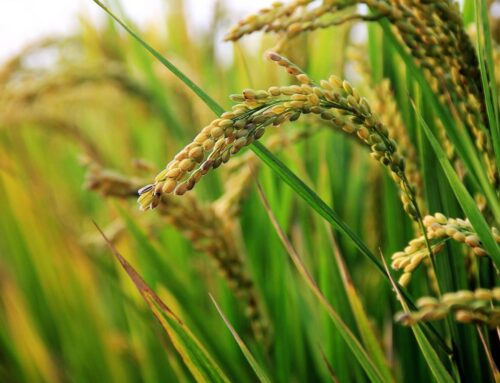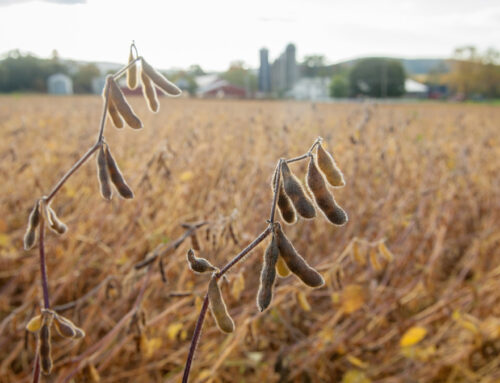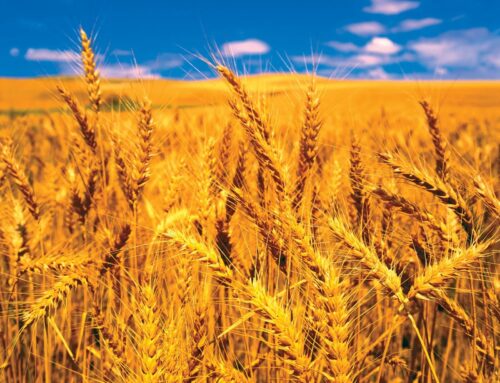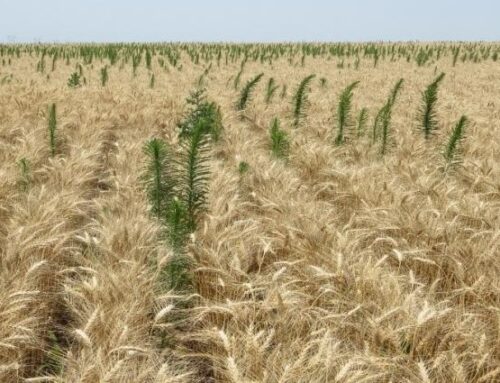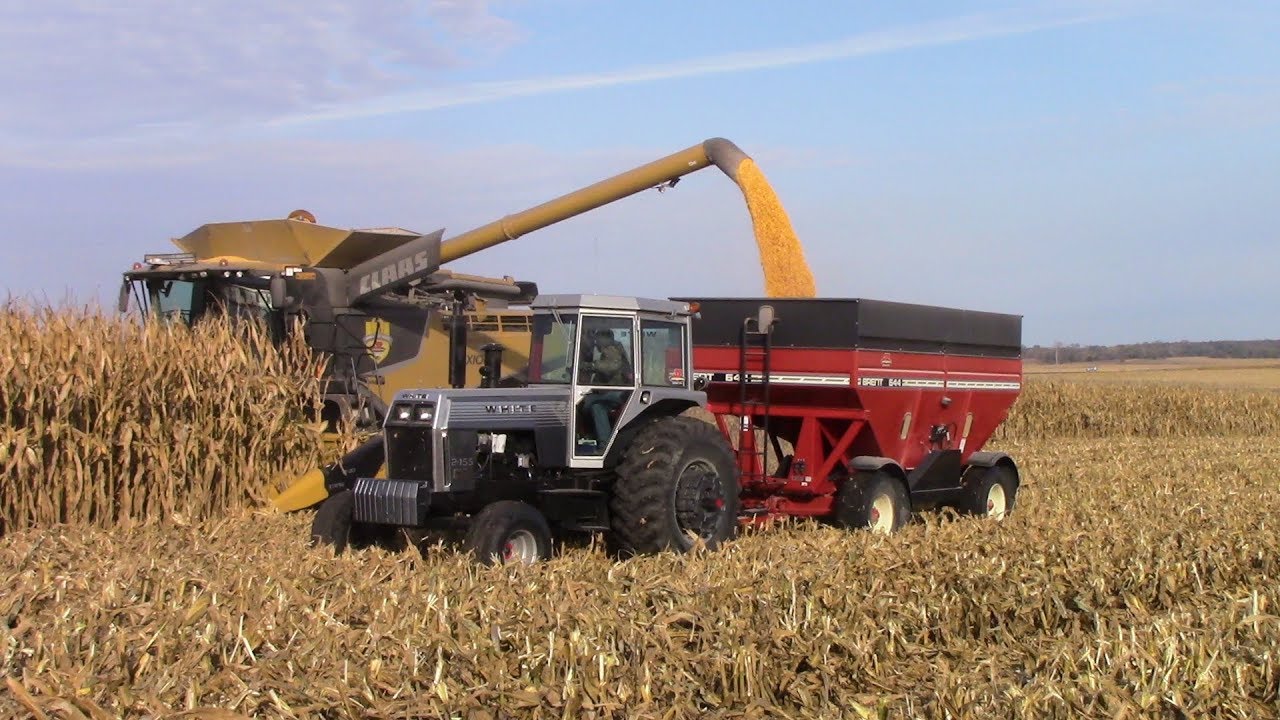
The chirping crickets and the symphonic songbirds may be the only things you hear when you walk through your corn. Silently, though, the crop might be sounding an alarm. Pale, streaked, or unhealthy-looking corn may be screaming out a nutrient deficiency.
Take a second to think before you nix nutrient deficiency as a reason for sickly corn. Odds are it’s not a micronutrient deficiency. It could be a major nutrient deficiency, such as nitrogen (N), phosphorus (P), or potassium (K). Even so, don’t panic. Your crop may grow out of it, or you may be able to rescue it in season. At worst, you can take steps to prevent it from occurring next year.
Patience and understanding. That’s what Emerson Nafziger, University of Illinois Extension agronomist, recommends taking to the field with you. Note field conditions and ask yourself if it’s been overly wet or dry. Many times, what looks like a nutrient deficiency is merely a symptom of restricted root growth from less-than-ideal conditions, explains Nafziger. Once conditions return to normal, plants should grow out of the stress.
Micronutrients have been garnering more attention lately. Still, chill. Fields are unlikely to have a sudden onset of a micronutrient deficiency, says Nafziger.
“The amount of micronutrients in the soil is huge,” says Fabian Fernandez, University of Minnesota Extension nutrient management specialist. “You’re not going to deplete the micronutrients very quickly. Applying micronutrients to replenish what’s removed isn’t economical. Most will become unavailable before the next crop. If you have a micronutrient deficiency, it will be very obvious.”
Upshot: Monitor corn for N, P, K, and a couple others. Corn has telltale signs it has a nutrient deficiency. Proper identification is the first step in management. Following are five key nutrient deficiencies that you want to be able to spot.
NITROGEN
SYMPTOMS
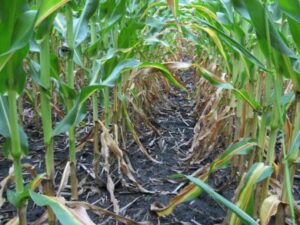 The saying “Don’t sweat the small stuff” doesn’t apply to nitrogen (N) deficiencies.
The saying “Don’t sweat the small stuff” doesn’t apply to nitrogen (N) deficiencies.
N deficiencies spur a yellowing of the corn plant. Look for an inverted “V” pattern that starts at the tip of the leaf, says Fernandez.
“Later in the season, the deficiency will develop on the older leaves because it’s a mobile nutrient,” he says.
NUTRIENT DETAILS
N is the most common, visible nutrient deficiency, says Nafziger. Corn will frequently show N stress when it’s been in standing water or if it’s short on moisture.
Restricted root growth is frequently the culprit when yellow corn surfaces during the beginning of the season, explains Melissa Bell, Mycogen Seed commercial agronomist.
“Firing (what N deficiency symptoms are frequently called) is also an indication of dry conditions,” says Nafziger. “It’s an indication the plant has entered survival mode and is trying to fill kernels. It involves withdrawing N from the lower leaves first.”
MANAGEMENT
Evaluate whether the corn actually has an N deficiency or, instead, has restricted root growth.
For a standard blueprint, Dave Franzen, North Dakota State University Extension fertility specialist, encourages putting in an N-rich area to use as a guide through the season.
If deficiency symptoms surface, apply more as soon as possible, but make sure it’s before tasseling in order to glean a yield difference, says Franzen.
PHOSPHORUS
SYMPTOMS
 Purple corn isn’t a sign a farmer is a Minnesota Vikings fan. Instead, purple corn – especially early on – is a sign of a phosphorus (P) deficiency.
Purple corn isn’t a sign a farmer is a Minnesota Vikings fan. Instead, purple corn – especially early on – is a sign of a phosphorus (P) deficiency.
NUTRIENT DETAILS
“P deficiency is usually a temporary condition,” says Nafziger. If conditions have been cool and wet while soil tests show sufficient P levels, then the corn should grow out of it, he adds.
Franzen seconds that. “Anything that restricts growth – such as compaction, cold weather, and insect feeding – can contribute to purple corn,” he says.
MANAGEMENT
If you notice purple corn, Franzen recommends taking a soil sample. If results show sufficient P levels, take note of field conditions.
“The entire field isn’t going to be purple,” Franzen. “Take a sample of plants from a healthy area and another sample from the purple area. Send them to a lab for a P analysis.”
Results can help with preparations for next year. Since P is not mobile, rescue treatments aren’t an option, he says.
POTASSIUM
SYMPTOMS
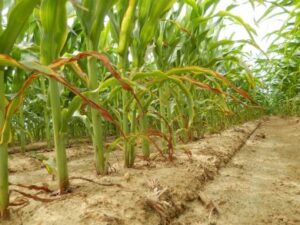 Potassium (K) deficiency symptoms try to mimic those of nitrogen. Don’t be fooled. It starts with yellowing of the leaf tip and extends to the base on the outside of the lower leaves. The leaves will turn yellow and brown.
Potassium (K) deficiency symptoms try to mimic those of nitrogen. Don’t be fooled. It starts with yellowing of the leaf tip and extends to the base on the outside of the lower leaves. The leaves will turn yellow and brown.
There’s noticeable burning on the edge of the leaves. This deficiency is common early in the season during dry years.
“The most common symptom is leaves’ edges looking burned,” says Fernandez.
“K deficiency is one that people pay a lot of attention to,” says Nafziger. “It’s often streaky in cornfields.”
NUTRIENT DETAILS
“We see a lot of K deficiency in the headlands where there is compaction,” says Bell.
This deficiency can also result in stunted, unhealthy plants, and aborted kernels.
“With K deficiency, it’s more likely to see higher incidences of crop lodging,” explains Bell. “As we near the harvest window, we will see hybrids lodging. In some cases, it’s a result of low K.”
MANAGEMENT
If areas of a field are found to be deficient, it’s possible to treat, says Franzen.
Postplant soil applications of fluid or granulated K broadcast are options for rescue treatments. The best way to avoid K-deficient soils is to apply it to the soil before planting, says Fernandez.
Similar to other nutrients, the uptake of K will be limited in dry conditions. If normal growing conditions return, the symptoms should disappear. Take note of deficient areas and soil-sample after harvest for appropriate fertilization, says Franzen.
SULFUR
SYMPTOMS
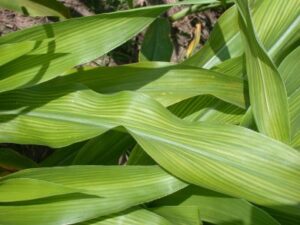 If your corn looks like it tried on a pinstripe suit, then it’s likely sulfur (S) deficiency. S deficiencies result in a yellow striping pattern on the newest corn leaves, explains Fernandez.
If your corn looks like it tried on a pinstripe suit, then it’s likely sulfur (S) deficiency. S deficiencies result in a yellow striping pattern on the newest corn leaves, explains Fernandez.
NUTRIENT DETAILS
Look for S deficiencies in light soils. Soil used to get a lot of sulfur from pollution, says Bell.
It doesn’t now. Blame the Clean Air Act. This federal air pollution law has led to less emissions of sulfur dioxide deposited in the soil through rain and air.
MANAGEMENT
S deficiencies sprout up more often at the start of the season. As soils warm up, organic material will release more S, says Nafziger.
If you’re concerned about the possibility of S deficiency, he suggests putting out treatment strips to evaluate responses to S.
Low organic soils and sandy soils should be targeted for S application first, says Nafziger.
If your field is S deficient and the plants aren’t able to grow out of it, rescue treatments are an option, says Franzen.
Common options to correct S deficiencies are to apply ammonium thiosulfate liquid to the soil or ammonium sulfate, says Fernandez.
ZINC
SYMPTOMS
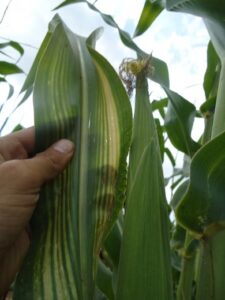 Zinc (Zn) deficiency symptoms include stripes that can be confused with S-deficiency symptoms.
Zinc (Zn) deficiency symptoms include stripes that can be confused with S-deficiency symptoms.
“The typical symptomatology is a broad white strip on both sides of the midrib that extends to the tip of the leaf,” says Fernandez.
NUTRIENT DETAILS
“Of all the micronutrients for corn, Zn is the one most likely to be deficient,” says Fernandez.
Zn deficiencies are usually landscape related.
“Look to the eroded parts of the field for Zn deficiencies,” says Franzen.
MANAGEMENT
“Like most nutrient deficiencies, if the soil is truly deficient, it will likely continue,” says Fernandez. “You want to target the application early in the season.”
Options include adding it to your starter fertilizer or using zinc sulfate granules.
USE THE ENTIRE TOOLBOX
When trying to identify nutrient deficiencies in corn, use all of the available tools together, says Fernandez.
Tissue sampling has been gaining in popularity, but results can be lost in translation. To draw accurate conclusions of nutrient levels, take a tissue sample from the problem area in the field and another sample from a healthy area. Then look at them in conjunction with the results from soil sampling.
“Use the results of the tests to draw a conclusion,” says Fernandez.
The growth stage of corn will determine how much of each nutrient is present in the plant, which can cause tissue sampling to be even more variable.
For example, if you are worried about zinc and you have low soil test levels and low tissue test levels, then you may want to consider an application, says Nafziger.
Soil tests aren’t that well correlated to plant need, and exact levels at which plant tissue is deficient are not known with precision. But, if both soil and tissue tests are low, that’s a signal it’s deficient.
For that reason, he doesn’t recommend using them as a standalone test.
Read the original article – CLICK HERE

